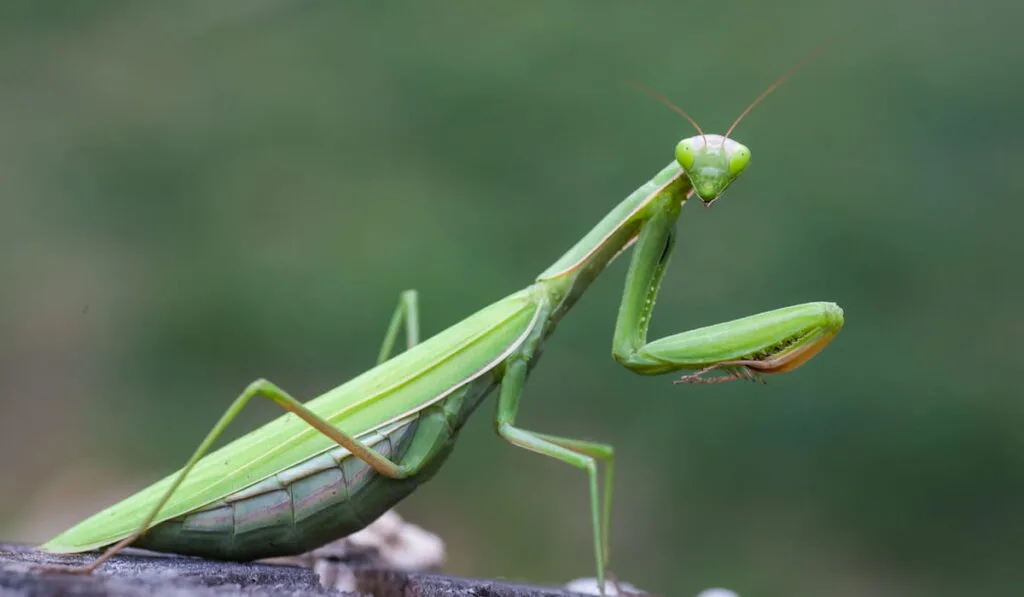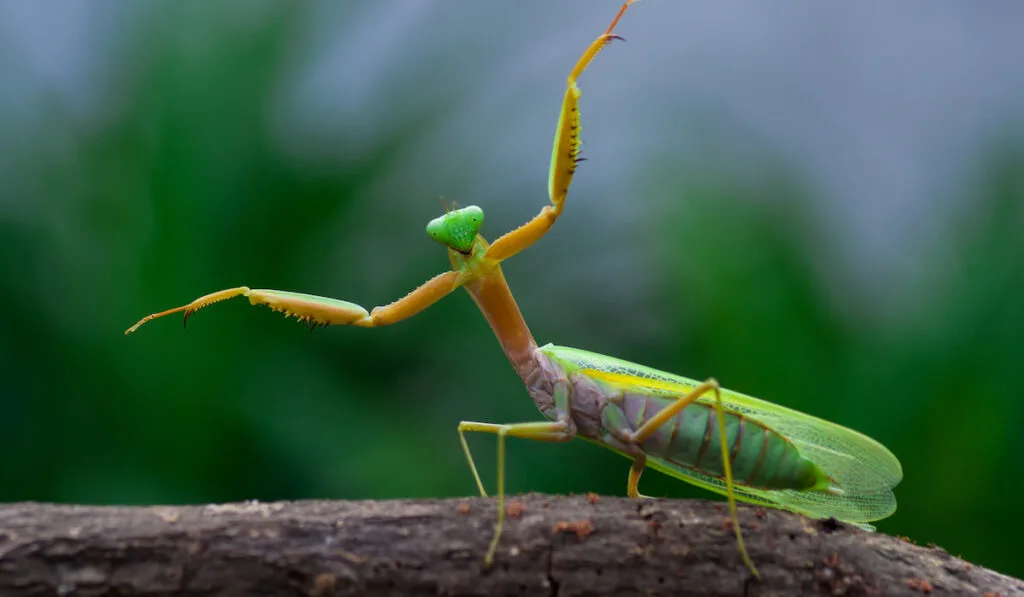With big eyes, pincer-like legs and a long body, praying mantises are already poised to stand out in the insect world. But along with their impressive physical features, do praying mantises also fly?
Some Praying Mantises can fly, but not all of them. For starters, some – but not all – praying mantises do have wings. However, not all of them use those wings to fly. Some praying mantises do fly, but that depends on the species of praying mantis and other factors.

Table of Contents
Do Praying Mantises Have Wings?
Building on the sentiment of “sometimes they fly”, many species of praying mantis are not only flightless but they never even develop wings.
Others will grow wings, but ones that are too short and small to be physically capable of flight. Still, others actually grow impressively long wings, spanning the full length of their bodies.
What’s interesting, too, is that they actually develop two sets of wings. The outer set is more protection-focused, as is acts more as camouflage as well as an extension of a tougher shell for protection.
The second set of wings is the inner set and are light, delicate and colorless. These are the wings that, if developed, are used for flight.
However, wings don’t fully develop until close to the end of a praying mantis’s life span (around 1 year).
Many species of praying mantis do not develop wings, while other species only develop small wings that are incapable of flight.
So which ones can fly?

As mentioned above, some praying mantises can fly – but only certain ones. Factors that determine whether or not a mantis can take flight include the species, the gender, the stage of life and even the weight of the insect.
For starters, there are three main types of praying mantis: the Chinese, European and Carolina.
At up to 5 inches long, the Chinese praying mantis is the largest. The European is in the middle, being around 3 inches long. And the smaller, the Carolina, maxes out at around 2.5 inches long.
Interestingly, both sexes of the Chinese and European mantises fly. However, the males weigh less than females and are therefore capable of longer flights.
Females, being larger than males, and are generally only able to muster up short flights.
In the Carolina species, only the male mantises fly, and they mostly opt to fly after dark in search of prey. The females of the Carolina variety are flightless, as their wings are much too short.
Bats know when praying mantises are out, too, and take advantage of night flights to grab some tasty insect snacks right out of the air. But evolution has helped out the mantis to try and avoid being a fly-up treat.
Praying Mantis Ears

Whereas most insects do not hear in the traditional sense, instead sensing vibrations, praying mantises have actually developed a singular ear.
This ear is located in the middle of their abdomen and is particularly attuned to the high-pitched call of a bat.
Since bats use echolocation to find their way about, the praying mantis ear is designed to pick up on that high frequency – and no other tones.
Since they can hear when a bat is coming close, a flying mantis can enact evasive maneuvers. Typically, they will make a sharp turn, out of the bat’s path, and drop down to the ground to safety.
Mechanics during flight
During flight, a praying mantis will move their head back and forth. This is theorized to be an adaptation to assist the body in landing perfectly on a specific target. When they land successfully, too, they often shake their bodies upon sticking the landing.
The Smithsonian also observed that a praying mantis rotates itself around 2.5 times per second in mid-air. But, the kicker is – They don’t actually rotate their bodies, but rather their abdomen and front legs alone. When about to grab prey, the mantis quickly stops its rotation
What else do they use their wings for?
Often, a set of wings can be used for more than just flight. In the case of a praying mantis, wings can be used as a defense mechanism and show of ferocity.
A praying mantis that feels threatened will assume a larger posture, standing tall with its spiked forelegs spread out wide, mouth open and gaping and, importantly, they use their wings as extra scare-factors, fanning them out as wide as possible.
The wings play an important part in making a mantis seem larger than it is and more dominant or aggressive.
They may also have bold colors or garish patterns inside their wings (and their forelegs) as a further visual deterrent for predators and threats. If the defensive pose does not work to scare its target away, a praying mantis may resort to striking out with its pincer-like forelegs, pinching or even biting a threat.
How else do they move?
Young mantises and flightless mantises that cannot take to the air prefer a leaping movement to get from place to place. Their leap, though, is no ordinary jump – they can leap quite literally in the span of a blink of an eye.
Their landing is the stuff of pure accuracy, too, as they are almost always on target. They can stop in an instant and be incredibly precise in facing the correct direction.
Praying mantises are fascinating creatures. Though ferocious looking, they are often a gardener’s best friend. And they are a species with incredible diversity, with only some members having the power of flight.
